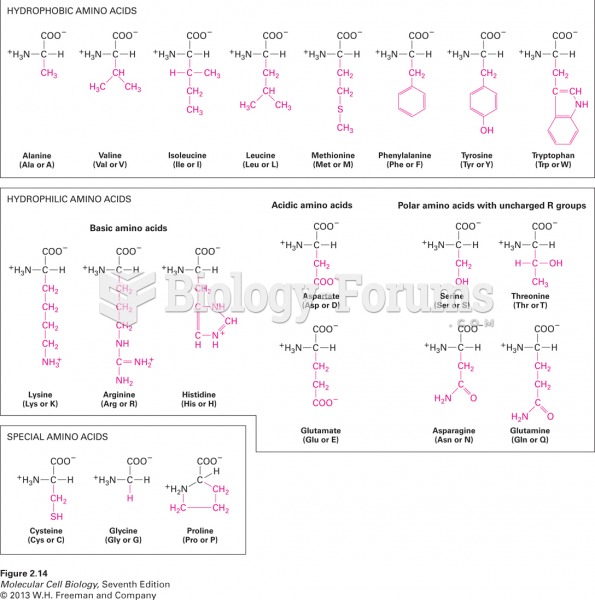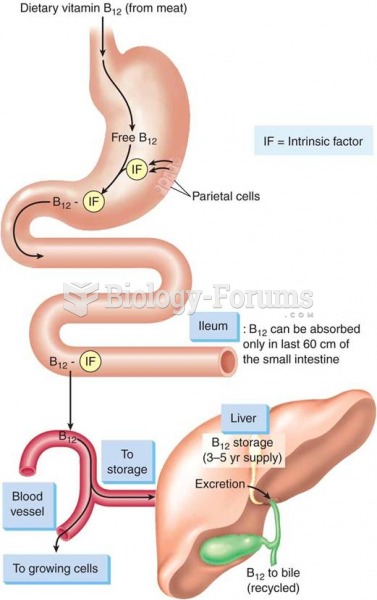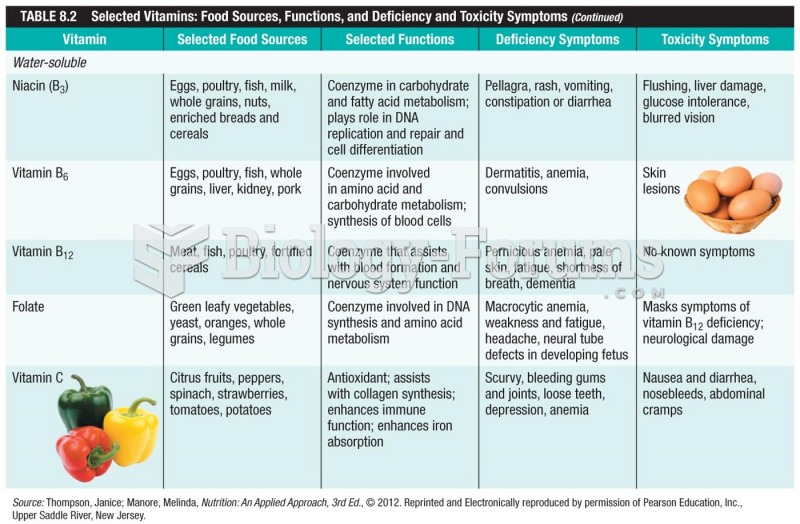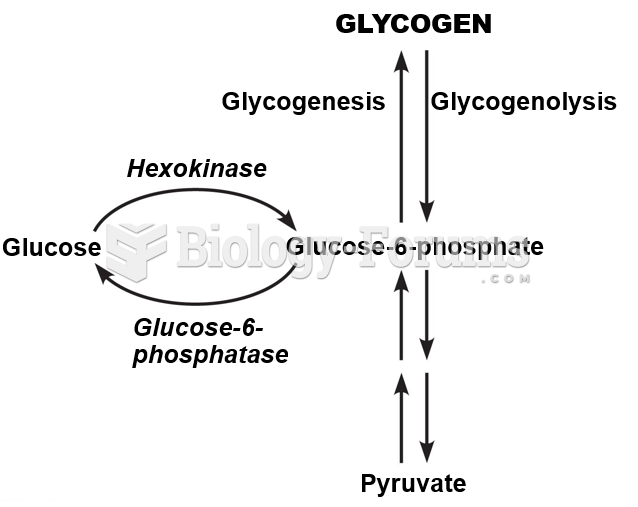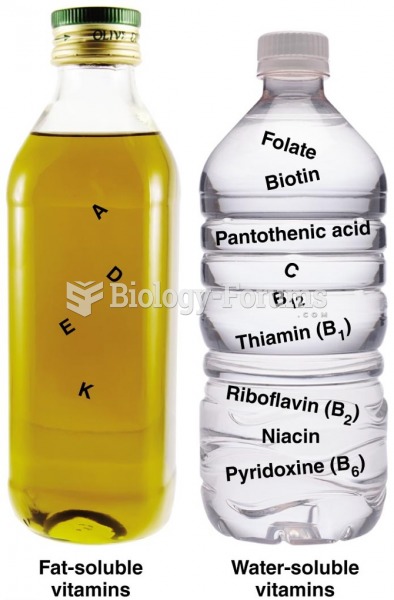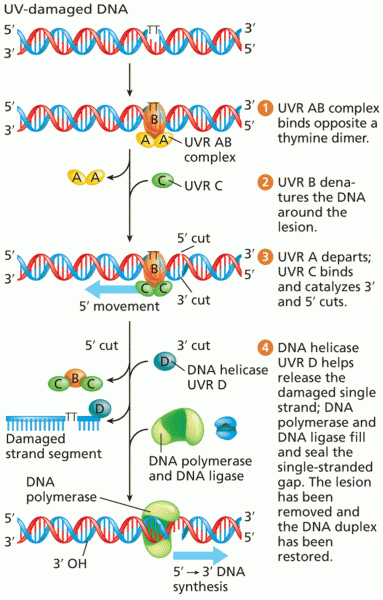Answer to Question 1
During alcohol metabolism, the multitude of other metabolic processes for which the niacin coenzyme is required, including glycolysis, the TCA cycle, and the electron transport chain, falter. Its presence is sorely missed in these energy pathways because it is the chief carrier of the hydrogens that travel with their electrons along the electron transport chain. Without adequate coenzymes, these energy pathways cannot function. Traffic either backs up or an alternate route is taken.
Such changes in the normal flow of energy pathways have striking metabolic consequences. For one, the accumulation of hydrogen ions during alcohol metabolism shifts the body's acid-base balance toward acid. For another, alcohol's interference with energy metabolism promotes the making of lactate from pyruvate. The conversion of pyruvate to lactate uses some of the excess hydrogens, but a lactate build-up has serious consequences of its ownit adds still further to the body's acid burden and interferes with the excretion of another acid, uric acid, causing inflammation of the joints.
Alcohol alters both amino acid and protein metabolism. Synthesis of proteins important in the immune system slows down, weakening the body's defenses against infections. Evidence of protein deficiency becomes apparent, both from a diminished synthesis of proteins and from a poor diet. Normally, the cells would at least use the amino acids from the protein foods a person eats, but the drinker's liver deaminates the amino acids and uses the carbon fragments primarily to make fat or ketone bodies. Eating well does not protect the drinker from protein depletion; a person has to stop drinking alcohol.
The accumulation of coenzymes with their hydrogens and electrons slows the TCA cycle, so pyruvate and acetyl CoA build up. Excess acetyl CoA then takes the pathway to fatty acid synthesis, and fat clogs the liver. As you might expect, a liver overburdened with fat cannot function properly. Liver cells become less efficient at performing a number of tasks. Much of this inefficiency impairs a person's nutritional health in ways that cannot be corrected by diet alone. For example, the liver has difficulty activating vitamin D, as well as producing and releasing bile. The fatty liver has difficulty making glucose from protein. Without gluconeogenesis, blood glucose can plummet, leading to irreversible damage to the central nervous system. The lack of glucose together with the overabundance of acetyl CoA sets the stage for ketosis. The body uses excess acetyl CoA to make ketone bodies; their acidity pushes the acid-base balance further toward acid and suppresses nervous system activity. To overcome such problems, a person needs to stop drinking alcohol.
The synthesis of fatty acids accelerates with exposure to alcohol. Fat accumulation can be seen in the liver after a single night of heavy drinking. Fatty liver, the first stage of liver deterioration seen in heavy drinkers, interferes with the distribution of nutrients and oxygen to the liver cells. Fatty liver is reversible with abstinence from alcohol. If fatty liver lasts long enough, however, the liver cells will die and form fibrous scar tissue. This second stage of liver deterioration is called fibrosis. Some liver cells can regenerate with good nutrition and abstinence from alcohol, but in the most advanced stage, cirrhosis, damage is the least reversible.
Answer to Question 2
When a person consumes a low-carbohydrate diet, a metabolism similar to that of fasting prevails. With little dietary carbohydrate coming in, the body uses its glycogen stores to provide glucose for the cells of the brain, nerves, and blood. Once the body depletes its glycogen reserves, it begins making glucose from the amino acids of protein (gluconeogenesis). A low carbohydrate diet may provide abundant protein from food, but the body still uses some protein from body tissues.
Dieters can know glycogen depletion has occurred and gluconeogenesis has begun by monitoring their urine. Whenever glycogen or protein is broken down, water is released and urine production increases. Low-carbohydrate diets also induce ketosis, and ketones can be detected in the urine. Ketones form whenever glucose is lacking and fat breakdown is incomplete.
Many fad diets regard ketosis as the key to losing weight, but studies comparing weight-loss diets find no relation between ketosis and weight loss. People in ketosis may experience a loss of appetite and a dramatic weight loss within the first few days. They should know that much of this weight loss reflects the loss of glycogen and protein together with large quantities of body fluids and important minerals. They need to appreciate the difference between loss of fat and loss of weight. Fat losses on ketogenic diets are no greater than on other diets providing the same number of kcalories. Once the dieter returns to well-balanced meals that provide adequate energy, carbohydrate, fat, protein, vitamins, and minerals, the body avidly retains these needed nutrients. The weight will return, quite often to a level higher than the starting point. In addition to weight loss, ketogenic diets are often used in the treatment of several diseases, most notably epilepsy


